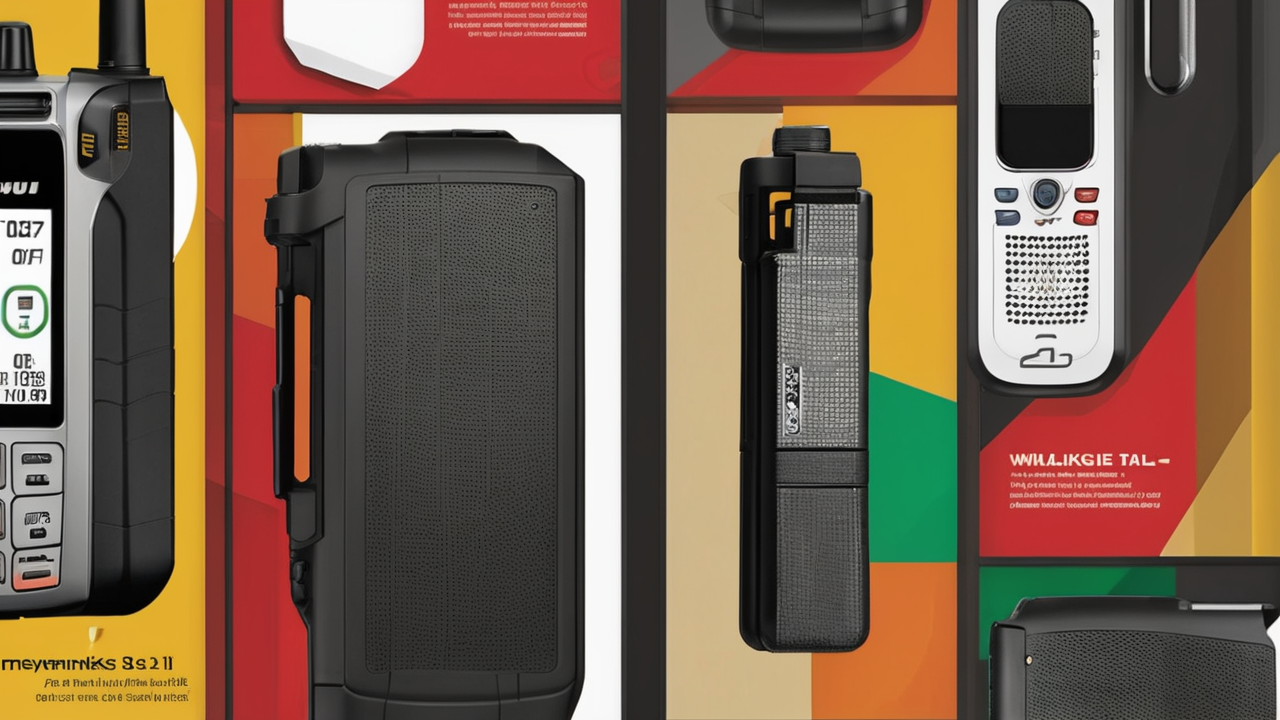Understanding the Fundamentals of Walkie-Talkie Technology
The Evolution of Walkie-Talkie Devices
Walkie-talkies have come a long way since their inception. They started as bulky military tools in World War II. Today, they are compact and feature-rich. Early models were analog and had limited range. Modern devices use digital technology for clearer sound and wider coverage.

The first civilian walkie-talkies appeared in the 1960s. They were popular among outdoor enthusiasts and workers. Over time, manufacturers improved battery life and durability. The introduction of nationwide walkie-talkies marked a significant leap. These devices can now cover vast distances, making them ideal for various uses.
Key Technologies in Modern Walkie-Talkies
Modern walkie-talkies incorporate several advanced technologies. Digital signal processing is a key feature. It enhances audio quality and reduces background noise. Many models now use GPS for location tracking. This is crucial for safety and coordination in large-scale operations.
Encryption is another important technology. It ensures secure communication, especially for business or emergency services. Bluetooth connectivity allows for hands-free operation. Some high-end models even offer Wi-Fi capabilities. This enables integration with smartphones and other devices.
The Difference Between Analog and Digital Walkie-Talkies
Analog and digital walkie-talkies differ in how they transmit signals. Analog devices convert voice into radio waves. These waves can be affected by distance and obstacles. This can result in static or unclear audio. However, analog models are often simpler to use and more affordable.
Digital walkie-talkies convert voice into digital signals. These signals are less prone to interference. They maintain clearer audio quality over longer distances. Digital models often have additional features like text messaging. They also allow for multiple conversations on the same channel. However, they tend to be more expensive than analog models.
Selecting the Right Nationwide Walkie-Talkie
Criteria for Choosing Your Nationwide Walkie-Talkie
When selecting a nationwide walkie-talkie, consider several factors. Range is crucial for nationwide communication. Look for models that offer extensive coverage. Battery life is another important aspect. Long-lasting batteries ensure reliable communication during extended use.

Durability is key, especially for outdoor or industrial use. Check for water and dust resistance ratings. Audio quality should be clear, even in noisy environments. Consider additional features like GPS, emergency alerts, or group calling. These can enhance functionality for specific needs.
Price is also a factor, but don't compromise on essential features. Remember, a more expensive model might offer better long-term value. Consider your specific needs and usage scenarios when making a decision.
Comparing Top Nationwide Walkie-Talkie Models
Several brands offer nationwide walkie-talkies with varying features. Motorola's WAVE PTX series is known for its robust build and extensive range. It offers both Wi-Fi and cellular connectivity. The Hytera PNC380 is another popular choice. It provides clear audio and GPS functionality.
Kenwood's NX-3000 series offers both analog and digital modes. This flexibility is useful in different scenarios. Icom's IP501H uses LTE networks for nationwide coverage. It's compact and offers smartphone-like features. Zello PTToC devices turn smartphones into walkie-talkies. They're cost-effective but depend on cellular networks.
Compare these models based on your specific requirements. Consider factors like range, battery life, and additional features. Read user reviews and professional assessments for real-world performance insights.
Importance of Features and User Experience
Features play a crucial role in the user experience of nationwide walkie-talkies. Easy-to-use controls are essential, especially in high-stress situations. Large, backlit displays improve visibility in various conditions. Programmable buttons allow for quick access to frequently used functions.
Voice activation can be useful for hands-free operation. Some models offer text messaging for silent communication. Group call features are valuable for team coordination. Emergency alert buttons provide an added layer of safety.
Consider the learning curve associated with each device. Some feature-rich models might require more training. Balance the features you need with ease of use. The best device is one that meets your needs and is comfortable to operate.
Legal and Regulatory Considerations in the United States
Understanding FCC Regulations for Walkie-Talkies
The Federal Communications Commission (FCC) regulates walkie-talkie use in the US. Different types of walkie-talkies fall under various FCC rules. Family Radio Service (FRS) devices are for personal use. They don't require a license but have power limitations.

General Mobile Radio Service (GMRS) walkie-talkies offer more power. However, they require an FCC license. Nationwide walkie-talkies often use cellular networks. These are subject to different regulations than traditional two-way radios.
Always check the FCC website for the most up-to-date regulations. Ensure your chosen device complies with current rules. This helps avoid potential legal issues and fines.
The Legal Implications of Using Walkie-Talkies in Different Regions
Walkie-talkie regulations can vary by state and local jurisdiction. Some areas have restrictions on using these devices in certain locations. For example, many national parks have rules about radio use. Some cities limit the use of walkie-talkies in public spaces.
When traveling, be aware of local laws regarding radio communication. This is especially important for nationwide walkie-talkies. Their long-range capabilities might conflict with local regulations. Always research the rules of your destination before using your device.
Businesses using walkie-talkies should consult local authorities. This ensures compliance with all relevant laws and regulations.
How to Stay Compliant with US Walkie-Talkie Laws
To stay compliant, start by choosing an FCC-approved device. Keep your usage within the allowed frequency bands and power levels. If using a GMRS device, obtain and renew your license as required. Respect privacy laws by not intercepting or sharing private communications.
Educate all users about proper and legal operation of the devices. This includes understanding when and where to use them. Keep records of your devices and licenses for easy reference. Stay informed about any changes in FCC regulations or local laws.
If using nationwide walkie-talkies for business, consult a legal expert. They can help ensure your usage complies with all relevant regulations. Regular compliance checks can help avoid unintentional violations.


